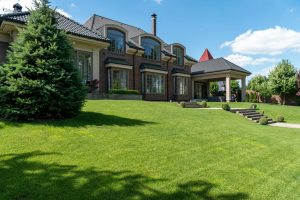Housing for Different Generations: Bridging the Gap in Multi-Age Communities
In today’s society, the concept of multigenerational living has become increasingly prevalent. With the rise of dual-income households, increased life expectancy, and a growing need for affordable housing, many families are choosing to live together under one roof. While this arrangement has its benefits, it can also present unique challenges when it comes to housing. In this article, we will discuss the importance of bridging the gap in multi-age communities when it comes to housing for different generations.
The Need for Multigenerational Housing
Changing Demographics
The demographics of the United States have changed significantly in recent years. The baby boomer generation is reaching retirement age, and with an increase in life expectancy, many are living longer than previous generations. At the same time, the millennial generation is facing financial challenges, including high student debt and a competitive job market, making it difficult for them to afford their own homes. As a result, we are seeing a growing trend of adult children moving back in with their parents, and aging parents moving in with their adult children.
Dual-Income Households
Gone are the days when one parent would stay at home to take care of the household and children. With the rising cost of living, it has become necessary for both parents to work, making dual-income households the norm. This means that grandparents are no longer readily available to help with childcare, and may require assistance themselves as they age.
The Benefits of Multigenerational Living
Despite the challenges, there are many benefits to multigenerational living. Aging parents can have a support system and maintain their independence, while providing valuable wisdom and life experiences to their children and grandchildren. Adult children can have built-in childcare and financial support, while still having a sense of privacy and autonomy. Multigenerational living can also help reduce the financial burden of homeownership, by splitting living expenses and pooling resources.
The Challenges of Multigenerational Housing
Lack of Suitable Housing Options
One of the biggest challenges when it comes to multigenerational housing is the lack of suitable options available. Most traditional housing options are designed for nuclear families, with limited options for accommodating multiple generations. This can lead to overcrowding, lack of privacy, and conflicts between family members with different lifestyles and needs.
Accessibility and Mobility Issues
As aging parents move in with their adult children, mobility and accessibility become important factors to consider. Many older adults may have limited mobility or health conditions that require specific accommodations, such as single-level living or wheelchair access. However, most conventional homes are not equipped to meet these needs, making it difficult for them to age in place.
Generational Differences
Different generations often have different lifestyles, values, and expectations, which can lead to conflicts and misunderstandings. For example, a family with young children may have different priorities and needs than their retired parents. This can create tension and strain relationships if not properly addressed.
Bridging the Gap in Multi-Age Communities
Designing Inclusive Housing
To bridge the gap in multi-age communities, it is essential to design inclusive housing that can accommodate the needs of different generations. This could include features such as separate living spaces, accessible designs, and flexible layouts to accommodate changing needs. Incorporating universal design principles can also make homes more accessible and comfortable for people of all ages and abilities.
Community Planning and Development
In addition to designing inclusive homes, community planning and development play a crucial role in creating multigenerational neighborhoods. This could include amenities such as community centers, parks, and public transportation, which can benefit people of all ages. Community events and activities can also foster relationships and a sense of belonging between different generations, creating a cohesive and supportive community.
Communication and Compromise
To ensure harmony in multigenerational households, open and effective communication is key. Each family member must be willing to compromise and be respectful of each other’s needs and boundaries. Clear agreements and expectations can also help avoid conflicts and maintain a harmonious living environment.
In Conclusion
The trend of multigenerational living is only going to continue to grow in the coming years, and it is crucial to address the challenges and bridge the gap in multi-age communities. By designing inclusive housing, promoting community planning and development, and fostering effective communication, we can create a supportive and harmonious environment for families of all ages.









